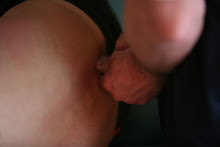I have had the honor and privilege over the past ten years to work with many amateur, colligate, and professional athletes. The thing I enjoy most about working with athletes is their respect of their body. Athletes of any level want to excel, they want to perform at a higher level than they do. This makes the athletic client so appealing due to the fact that they will work hard for these results. In general athletes are accustom to moving around on the table, performing contractions, and having their bodies moved into positions that challenge dysfunctional ranges of motion.
I have recently had many great results using protocols to balance pelvic position. Many of our clients present with imbalances within these three bones. We seem to see many athletes with these conditions due to muscle imbalance during repetitive motions of sport, pulling bones out of alignment.
The pelvis is made up of two hips and one sacrum. Here we have three joints that can develop problematic movement patterns: the two sacroiliac joints and one symphysis pubis. Here we also have numerous ligaments that can be very important pain generators. The ligaments I am most concerned with are Iliolumbar, dorsal sacroiliac, sacrotuberous, and the sacrococcygeal ligaments. When the three bones listed above are out of balance they will undoubtedly tug on these soft tissues and cause discomfort, and some times great pain. Low back pain, gluteal pain, and leg pain are just the beginning. These pains can translate into the mid and upper back, shoulder, neck, and to the knee, ankle and foot.
Through the use of specific body positions and gentle stretching and limited contractions we can, as soft tissue therapists, begin to realign some of the osseous tissues in the pelvis, thus helping the client to regain balance and release muscle strain.
In up coming entries I will look at these mechanisms more closely, and we can discuss correction. And if no one reads this, I still have the chance to practice my writing.
Monday, February 12, 2007
Subscribe to:
Post Comments (Atom)


No comments:
Post a Comment